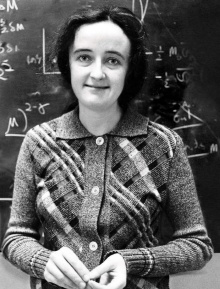Beatrice Tinsley
| Beatrice Tinsley | |
|---|---|
 |
|
| Born |
27 January 1941 Chester, England |
| Died | 23 March 1981 (aged 40) New Haven, Connecticut, United States |
| Residence | United States |
| Fields | Astronomy |
| Institutions | Yale University |
| Alma mater | University of Canterbury; University of Texas at Austin |
| Known for | Evolution of galaxies |
| Notable awards | AAS Annie J. Cannon Award in Astronomy (1974) |
Beatrice Muriel Hill Tinsley (27 January 1941 – 23 March 1981) was a British-born New Zealand astronomer and cosmologist whose research made fundamental contributions to the astronomical understanding of how galaxies evolve, grow and die.
Tinsley was born in Chester, England in 1941, the middle of three sisters, and emigrated to New Zealand with her family following World War II. The family lived first in Christchurch, and then for a longer time in New Plymouth. Her father Edward Hill was a clergyman and Moral Re-Armer, was Mayor of New Plymouth (1953-56). While studying in Christchurch, she married physicist and university classmate Brian Tinsley, not knowing that this would prevent her from working at the University while he was employed there. They moved in 1963 to the United States, to Dallas, Texas, but she was similarly restricted there. In 1974, after years of attempting to balance home, family and two commuting careers, she left her husband and two adopted children to take a position as assistant professor at Yale. She worked there until her death from cancer in the Yale Infirmary in 1981. Her ashes are buried in the campus cemetery.
Tinsley attended New Plymouth Girls' High School, then studied at the University of Canterbury where she completed a B.Sc. and then a Master of Science degree in 1961, with First Class Honours in Physics. Her Doctor of Philosophy PhD was awarded by the University of Texas in Austin in 1966, with the thesis Evolution of Galaxies and its Significance for Cosmology.
Tinsley completed pioneering theoretical studies of how populations of stars age and affect the observable qualities of galaxies. She also collaborated on basic research into models investigating whether the universe is closed or open. Her galaxy models led to the first approximation of what protogalaxies should look like.
...
Wikipedia
